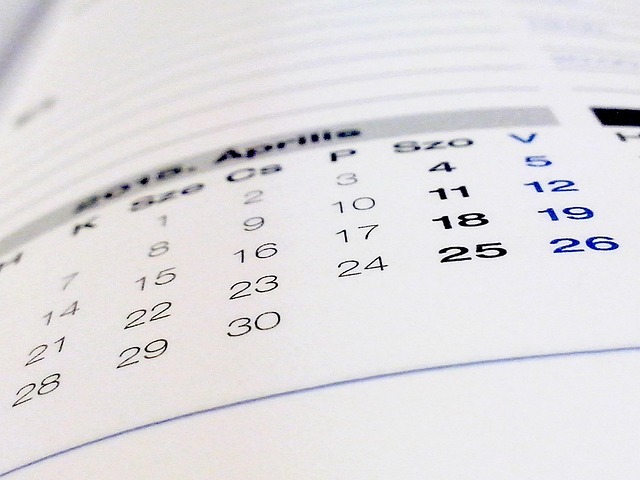Lunar Synchronization: Heart of Hijri Calendar’s Precision and Faith Connection
The Hijri Calendar, an ancient Islamic timekeeping system based on lunar cycles, differs from the We…….

The Hijri Calendar, an ancient Islamic timekeeping system based on lunar cycles, differs from the Western solar calendar. Each month begins with a new moon, influencing religious observances like Ramadan and festivals. This celestial-terra firm synchronization unites Muslims globally and is crucial for accurate date conversions, reflecting its cultural and scientific significance in Islamic art and architecture.
The Hijri Calendar, based on lunar cycles, is more than just a date system; it’s a rhythmic pulse that synchronizes Islamic life. This unique calendar, crucial for religious observances and cultural celebrations, relies on meticulous lunar synchronization to ensure accuracy. By aligning celestial time with terrestrial rhythms, the Hijri Calendar guides Muslims through prayers, fasting, and pilgrimage, fostering a profound connection between faith and community. Its precision in date calculation navigates Islamic life’s seasonal and cultural ebbs and flows.
- Lunar Cycles: The Heart of Hijri Calendar
- Synchronization: Alining Celestial and Terrestrial Time
- Cultural Significance: Connecting Faith and People
- Precision in Date Calculation
- Navigating Islamic Life's Rhythms
Lunar Cycles: The Heart of Hijri Calendar

The Hijri Calendar, an ancient timekeeping system used in Islam, is intricately tied to the natural cycles of the moon. At the heart of this calendar are lunar cycles, which play a pivotal role in its accuracy and significance. Understanding lunar months in Islam goes beyond mere measurement of time; it forms the very backbone of religious observances and celebrations.
In contrast to the Western solar calendar, the Hijri Calendar is based solely on visual observations of the moon’s phases. This means that each month begins with the new moon, marking the synchronization between the sun and the moon. The complexity lies in accurately determining when a thin crescent moon becomes visible, a task that has been refined over centuries by Islamic scholars. By observing these lunar cycles, Muslims are able to establish key dates, including the start of Ramadan, which is crucial as it dictates fasting times. Comparing Islamic and Western calendars reveals stark differences, highlighting the unique reliance on celestial events in the Hijri system. Visiting us at Islamic architecture and its calendrical basis anytime provides a deeper insight into these fascinating lunar-based practices.
Synchronization: Alining Celestial and Terrestrial Time

The Hijri Calendar, rooted in Islamic tradition, thrives on lunar synchronization—aligning celestial and terrestrial time. This meticulous practice involves tracking the moon’s phases to mark months precisely. Unlike solar calendars that primarily rely on the sun, the Hijri Calendar’s 29-30 day months are determined by the sighting of the new moon. This synchronization ensures that each month begins with the lunar phase closest to the earth’s orbit, creating a harmonious relationship between celestial and human timekeeping.
This practice is not merely an academic exercise; it deeply influences various aspects of Islamic life. In education, understanding the Hijri Calendar fosters a connection to Islamic history and traditions. It inspires engaging activities for hijri awareness, such as moon-watching events that bring communities together. Moreover, how the Hijri Calendar influences Islamic art is profound—its cycles inspire intricate designs in architecture, calligraphy, and even modern artistic interpretations. The etymology of the Hijri Calendar itself testifies to its significance, reflecting a rich cultural heritage that continues to shape Muslim practices globally. Find us at engaging activities for hijri awareness to explore this synchronization further.
Cultural Significance: Connecting Faith and People

The Hijri Calendar holds profound cultural significance, acting as a powerful connector between faith and people across the globe. Its lunar synchronization is not merely a scientific concept but deeply rooted in the Islamic tradition, fostering a sense of unity and shared spiritual experience among Muslims worldwide. This calendar system serves as a unifying force, enabling communities to come together for prayers, festivals, and significant life events, all aligned with the moon’s phases.
Through teaching the Hijri system to beginners, we cultivate an understanding that transcends mere timekeeping. Islamic holidays based on this calendric inspiration create opportunities for reflection, celebration, and connection. The lunar-solar fusion encourages a deeper appreciation for nature’s rhythms and fosters a sense of belonging within diverse communities. Engaging activities for Hijri awareness, available anytime, can help individuals immerse themselves in this rich tradition, promoting cultural sensitivity and global understanding. Visit us to explore these captivating insights into the Hijri Calendar’s enduring legacy.
Precision in Date Calculation

The Hijri Calendar, based on lunar cycles, demands precision in date calculation to align with the astronomical events it represents. Unlike solar calendars, which primarily rely on the Earth’s orbit around the sun, the Hijri calendar tracks the precise moments of the moon’s phases, making lunar synchronization its cornerstone. This meticulous approach ensures that each month begins with the new moon and ends with the next new moon, providing a consistent and accurate framework for dating across Islamic history and culture.
The artistic representations of Hijri months in various forms of art and even in Islamic architecture reflect this dedication to precision. When converting Gregorian dates to Hijri ones, understanding lunar synchronization is vital to ensure accuracy. This concept not only shapes the religious observances within Islam but also gives us a call to appreciate the profound impact of the Hijri calendar on architectural designs that adorn our spaces, encapsulating both cultural and scientific significance in their calendrical basis.
Navigating Islamic Life's Rhythms

Navigating Islamic Life’s Rhythms
The Hijri Calendar, with its rich history and origin dating back to Prophet Muhammad (peace be upon him), serves as a beacon that synchronizes Islamic life’s rhythms. Unlike the Gregorian calendar, which is solar-based, the Hijri Calendar is lunar, following the cycles of the moon. This synchronization plays a crucial role in understanding the islamic months and their significance. Each month, determined by the sighting of the new crescent moon, marks a fresh cycle of spiritual reflection, worship, and celebration. For instance, Ramadan, the holy month of fasting, begins when the moon is sighted, creating a collective experience that binds Muslims worldwide.
This lunar-based calendar has profound implications for various Islamic observances. It dictates the timing of prayers, the start and end of major festivals like Eid al-Fitr and Eid al-Adha, and even guides practices such as visiting us at ramadan timing using hijri calendar anytime during this sacred month. Moreover, understanding the Hijri Calendar’s unique structure helps Muslims globally maintain a profound connection to their faith and cultural heritage, ensuring traditions are observed with precision and unity.
The Hijri Calendar’s lunar synchronization is a fascinating interplay of celestial and terrestrial time, ensuring accuracy in date calculation. This precise alignment not only facilitates the navigation of Islamic life’s rhythms but also holds profound cultural significance, connecting faith and people through shared timelines. By embracing this unique aspect, the Hijri Calendar stands as a testament to human ingenuity and our ongoing quest to harmonize nature’s cycles with our lives.







